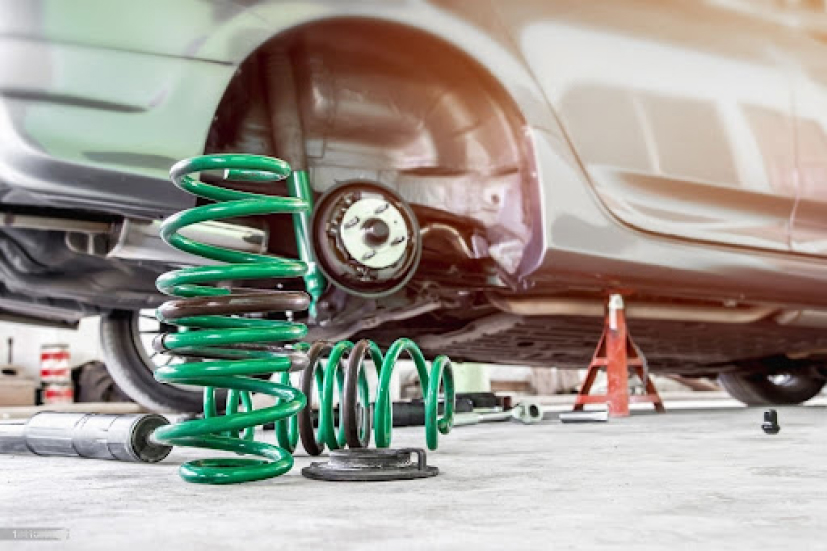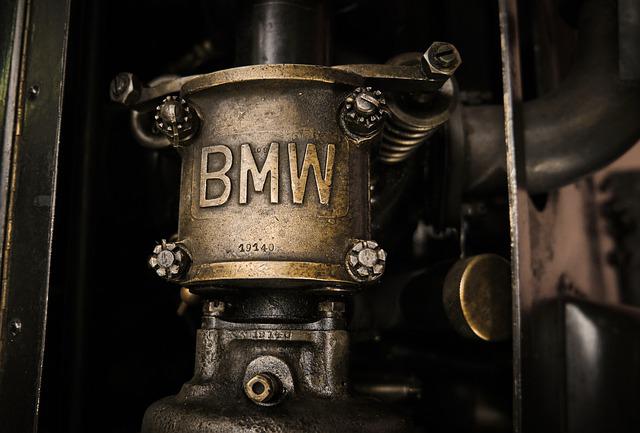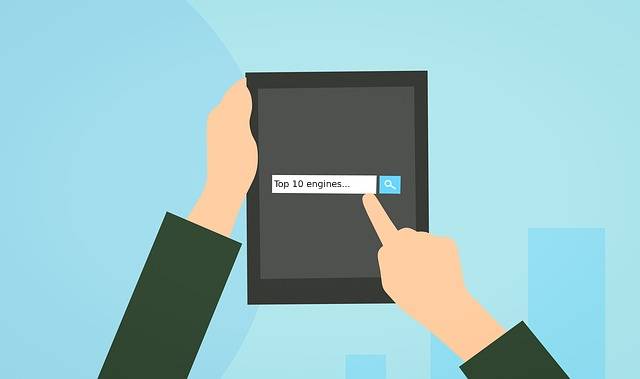10 Warning Signs Of Suspension System Problems In Your Car
Find Used Engines and Transmissions for a Great Price! Live Assistant For Used Engines Call 1800-518-9776

Like every other car component, your car's suspension system also plays a significant role, and any mishaps can keep you from enjoying comfortable rides. The primary role of a suspension system is to maximize the friction between your car and the road, which is generally an essential factor that allows stability and controlled traction when you drive.
The widely believed narrative is that the more contact your tires will have with the road, the better the friction and, thus, the more improved the traction and overall experience.
Another of the primary purposes of a suspension system is to distribute the vehicle's weight evenly. Hence, it is easier to handle, and the passengers can be offered a comfortable experience irrespective of the road's condition.
Let us walk you through it for those who need to learn how a suspension system works and what all components it incorporates.
5 significant components of your car's suspension system and their operation
All these components together work to ensure a smooth driving experience for passengers. Let's have a look at them one by one.
1. The frame
The frame of your suspension system is one of the most important components as it keeps all the parts cojoined and allows the operation of all of them together. The frame is designed to absorb shocks and vibrations that you might be getting on rough terrains, which is how it provides you with a smooth and comfortable ride.
2. Springs
Along with your car's frame, the springs also help you easily deal with all the bumps and potholes that disrupt your driving without really giving you a backache. They join your car's wheels with its body; springs come with anti-sway bars stabilizing the car on the road and preventing the passengers from feeling the bumps and the shocks.
3. Shock Absorbers
Usually, there is a shock absorber in a car for each of its tires. The entire purpose of these absorbers is to allow minimum disturbance while the car is on the road. They control the vehicle's movement, stabilize them, reduce wear and tear that occurs because of bad road conditions, and overall help the car stay in good condition.
4. Rods
All the internal components of your suspension system are conjoined and kept together safely with the help of metal rods or links that connect them all to allow ease of operation. They usually have a long life unless some external damage is done to your car.
5. Steering System
Although the steering is not like a coherent part of the suspension system, it does get affected as soon as a part of your suspension system fails. While the suspension allows better vehicle handling and a smooth ride, the steering is responsible for directing the vehicle on the road, and both work conjointly.
Now that we've discussed the essential components of a suspension system, it would be much easier to absorb the warning signs of a problematic suspension system. Let's have a look at them.
10 most common signs of a faulty suspension system
1. You feel the drive more than ever now
You can be the best judge here and answer this question most fairly as you have experienced your car at its best. You know how comfortable the rides were when it was new and if anything has changed significantly since it hit those miles on the odometer.
If you feel like the experience is not as comfortable as it used to be and that the rare-seat passengers now feel the drive more than ever now, this might be a clear sign of a faulty suspension system.
One best way to check the same is by taking your car for a drive in the same area where you more commonly take your car. Since you've driven here before when the car was new, you will be able better to notice the difference given the road's condition.
2. The car pulls to one side
If you notice that your car automatically pulls to either side of the road while you are trying to drive it on a straight road in a single lane, it's probably time you pay attention to what's going wrong with it.
One most common reasons your car might pull to one side of the road is misaligned wheels. If they are pointing in the wrong direction, it is common for your car to pull to that side and not go in the direction you are steering it in.
However, it could also be the consequence of low tire pressure, which is an easier problem to resolve.
But if none of these problems persists, and your car is still going here and there on the road, it's most probably because of the faulty suspension. Which by the way, can be very dangerous. Thus, getting it fixed as soon as possible is recommended.
3. It doesn't look balanced
Park your car on the leveled ground and check if it is more inclined to one side. It won't be that difficult to figure out; all you have to do is observe if the vehicle is unbalanced and if the answer is yes, this is what you need to do next.
Rule out all the possibilities to ensure that the problem is with your suspension only, as there can be many reasons for the same. You need to first check the tire pressure and the size of the wheels; it could be because of a twisted chassis.
Once you are sure it's not for those reasons, check if you have a bent suspension or if the struts, springs, or shock absorbers are at fault.
4. Plunging due to jerks
Nose diving is a very normal problem that occurs when you are driving fast (which, by the way, is not recommended). As a result of hard braking, it's usual for your car to plunge, but if this is something you experience more often and even when the car is being driven at average speed, it could be because of a faulty suspension.
There could be a problem with your car's shocks or struts which might need your attention, so be sure you take it to the mechanic before it's too late.
5. Leaking fuel
It isn’t exactly the fuel that is leaking and making you crazy. It is the fluid that the car’s shocks and structs have which is leaking due to the impact of bumps and potholes on your car. Nevertheless, it’s worth getting checked once.
6. Difficulty in handling the vehicle
The primary purpose of a suspension system in a car is to allow the driver to drive it quickly without any significant handling issues. However, suppose you have noticed increased difficulty in handling the vehicle on the road. In that case, it's probably because something is wrong with your suspension or a particular part that needs your immediate attention.
Understand that not having control over your vehicle on the road is one of the most dangerous situations you can put yourself and your family into. Thus, it's recommended you take it to a professional without delays.
7. Uneven treads
The suspension focuses sorely on evenly distributing the car's weight across your car's four wheels, ensuring that all tires wear evenly. One of the most common signs of faulty suspensions is uneven tire treads, which points toward the unequal weight distribution by the suspension system due to several factors.
Unfortunately, it can't be a self-diagnosed process, and you will have to solve the problem by seeking expert help. Though it is recommended if there is any significant wear and tear, you ask the concerned person to change the tire set to ensure stability on the road.
8. Squeaking sounds
There are a number of struts and metal joints in the car's suspension system, which focus on keeping it all together and allowing simultaneous operation of all the components for quick and smooth rides.
But since these are metal elements, with time, they can be worn out due to excessive pressure or friction, which might create these squeaking sound you hear every now and then.
Unfortunately, there isn't a way out of this situation apart from getting them changed. Thus it is only recommended that you do it without failing.
9. Bad braking
While braking, it's essential that the car slows with time and effortlessly; however, this might not be the situation every time. As soon as your brakes stop working correctly, your car will start shaking or vibrating every time you push the brake pedal, which may times damage the car's suspension.
10. It fails the bounce test
The bounce test is the ultimate answer to your questions when you need to see if your doubt regarding your suspension failure is right. It is a DIY diagnosis technique that people use primarily to asses the problem at home.
Thankfully it's not as difficult. All you have to do is push one side of your car down and let it go. If the car comes back to its original state in a single bounce, then probably it's not the suspension issue. But if it bounces more than once, then there is a huge probability that your shock absorbers are faulty, and you need a new pair.
With that, we will be concluding our discussions today. These are all the warning signs you need to look for if you doubt your car's suspension might not be in good shape.
We understand that having faulty car parts can come as an added expense that might be difficult to bear for many, which is why we vouch for used engines and used transmissions that are good quality and easy on the pocket.
For more information, consider Used Engines—inc - the preeminent merchandiser of used engines and transmissions in the US.
related
You May Also Like

Which BMW Has the Most Horsepower?
A car is useless if it doesn’t have good horsepower. Just imagine driving your car with sluggish acceleration and it drags on the road whenever you take it for a spin.
Read Article
10 Best Engines Made So Far By Top Engine Manufacturers
Over the years, the car industry has seen major changes. Car engines have become smarter and it looks like every new engine that rolls out is better than the other.
Read Article
How to Make Your Car Last Forever?
Isn’t it lovely when a new car works the way you want? The gears shift smoothly and the wheels roll without dragging against the road. But as your car gets older, you’ll notice that it doesn’t drive smoothly, has lower fuel mileage, and overheats easily.
Read Article